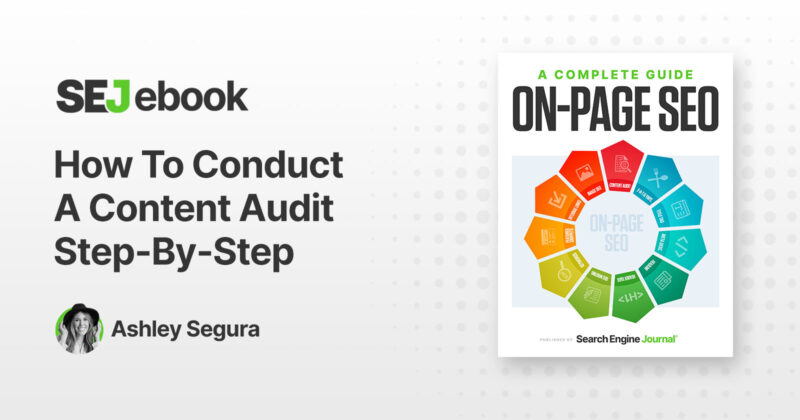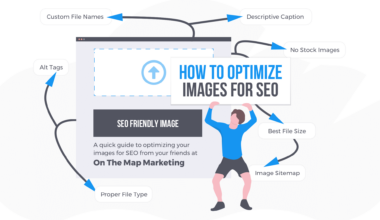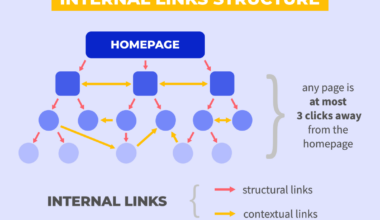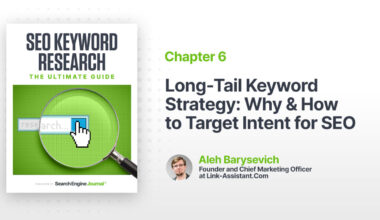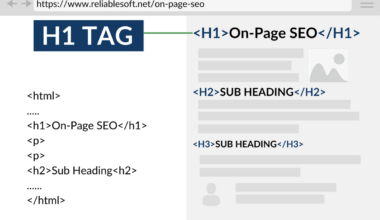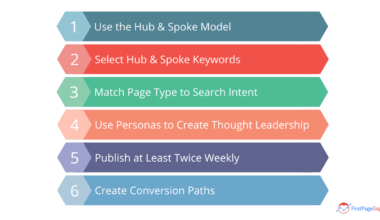Introduction to SEO Audit
As a website owner or digital marketer, it is important to conduct a comprehensive SEO audit periodically to ensure that your website is optimized for search engines. An SEO audit is a process of evaluating your website’s search engine visibility and identifying areas that need improvement. It helps to identify technical issues and content gaps that prevent your website from appearing in search results.
An SEO audit involves analyzing various factors that affect search engine rankings, including website architecture, content, on-page optimization, and off-page optimization. By conducting an SEO audit, you can identify the strengths and weaknesses of your website and develop a strategy to improve its visibility in search results.
There are several tools that you can use to conduct an SEO audit, including Google Analytics, Google Search Console, SEMrush, and Ahrefs. These tools provide valuable insights into your website’s performance, including traffic, keywords, backlinks, and more. You can also use these tools to identify technical issues such as broken links, duplicate content, and page speed.
Conducting an SEO audit is an ongoing process that requires continuous monitoring and improvement. By regularly analyzing your website’s performance and making necessary changes, you can ensure that your website is optimized for search engines and attracts more traffic. In the following sections, we will discuss the different aspects of an SEO audit in more detail.
Website Architecture Analysis
Website architecture refers to the way your website is structured, including its navigation, URLs, and internal linking. A well-structured website architecture is essential for search engine optimization because it helps search engines crawl and index your site more easily.
Here are some key factors to consider when analyzing your website architecture:
1. Site Structure: Your website should have a clear and logical structure that allows users and search engines to easily navigate and understand your content. Ideally, your site should have a flat structure with no more than three levels of depth.
2. Navigation: Your website’s navigation should be intuitive and user-friendly, with clear labels and easy-to-use menus. Make sure your navigation is consistent throughout your site and includes links to important pages.
3. URL Structure: Your URL structure should be clean and descriptive, with keywords included where possible. Avoid using dynamic URLs with multiple parameters, as these can be difficult for search engines to crawl.
4. Internal Linking: Internal links help search engines understand the relationships between different pages on your site. Make sure to include internal links throughout your content, using descriptive anchor text.
To analyze your website architecture, you can use tools like Screaming Frog or Sitebulb. These tools will crawl your site and provide a detailed report on its structure, including any issues or errors that need to be fixed.
Once you have identified any issues with your site’s architecture, you can make the necessary changes to improve its search engine visibility. This may include restructuring your site’s navigation, optimizing your URLs, or adding internal links to important pages.
By conducting a thorough website architecture analysis as part of your SEO audit, you can ensure that your site is well-structured and optimized for search engines. This will help improve your site’s search engine rankings and attract more traffic to your site.
Content Analysis
One of the most important factors in search engine optimization is content. High-quality, relevant, and engaging content can help improve your website’s search engine rankings and attract more traffic. Therefore, content analysis is a crucial part of any SEO audit.
Here are some key factors to consider when analyzing your website’s content:
1. Content Quality: The quality of your content is a key factor in search engine rankings. Your content should be original, informative, and relevant to your target audience. Avoid duplicate content or thin content that provides little value to users.
2. Keyword Optimization: Keyword optimization is important for ensuring that your content is relevant to the search queries of your target audience. Make sure to include relevant keywords in your content, but avoid keyword stuffing or overusing keywords.
3. Content Structure: The structure of your content is important for both users and search engines. Make sure your content is well-organized and easy to read, with clear headings, subheadings, and paragraphs.
4. Multimedia: Including multimedia content such as images, videos, and infographics can help improve the engagement and shareability of your content.
To analyze your website’s content, you can use tools like SEMrush, Ahrefs, or Google Analytics. These tools can provide insights into your content’s performance, including traffic, engagement, and keyword rankings.
Once you have identified any issues with your website’s content, you can make the necessary changes to improve its search engine visibility. This may include optimizing your content for relevant keywords, improving the structure of your content, or adding multimedia elements to improve engagement.
By conducting a thorough content analysis as part of your SEO audit, you can ensure that your website’s content is high-quality, relevant, and optimized for search engines. This will help improve your website’s search engine rankings and attract more traffic to your site.
In conclusion, conducting a comprehensive SEO audit is essential for ensuring that your website is optimized for search engines. By analyzing your website’s architecture, content, on-page optimization, and off-page optimization, you can identify areas that need improvement and develop a strategy to improve your website’s search engine rankings. Regularly conducting an SEO audit and making necessary changes will help ensure that your website is well-optimized and attracts more traffic.
On-page Optimization Review
On-page optimization refers to the various elements on your website’s pages that affect your site’s search engine rankings. These elements include meta tags, headers, images, and content. Conducting an on-page optimization review as part of your SEO audit can help identify areas that need improvement and make necessary changes to improve your site’s search engine visibility.
Here are some key factors to consider when conducting an on-page optimization review:
1. Title Tags: Your title tags should be descriptive and include relevant keywords. Make sure your title tags accurately reflect the content on your page and are no longer than 60 characters.
2. Meta Descriptions: Your meta descriptions should provide a brief summary of the content on your page and include relevant keywords. Make sure your meta descriptions are no longer than 155 characters.
3. Headers: Your headers (H1, H2, H3, etc.) should be properly formatted and include relevant keywords. Make sure your headers accurately reflect the content on your page and are not too long.
4. Content: Your content should be informative, engaging, and relevant to your target audience. Make sure to include relevant keywords in your content, but avoid keyword stuffing or overusing keywords.
5. Images: Your images should be properly optimized for search engines, including descriptive file names and alt tags. Make sure your images are not too large, as this can slow down your page load times.
To analyze your website’s on-page optimization, you can use tools like Google Search Console or Moz Pro. These tools can provide insights into your page’s performance, including keyword rankings and click-through rates.
Once you have identified any issues with your website’s on-page optimization, you can make the necessary changes to improve its search engine visibility. This may include optimizing your title tags and meta descriptions, improving your headers and content, or optimizing your images for search engines.
By conducting a thorough on-page optimization review as part of your SEO audit, you can ensure that your website’s pages are properly optimized for search engines. This will help improve your website’s search engine rankings and attract more traffic to your site.
Off-page Optimization Review
Off-page optimization refers to the various external factors that affect your website’s search engine rankings. These factors include backlinks, social media presence, and online reviews. Conducting an off-page optimization review as part of your SEO audit can help identify areas that need improvement and make necessary changes to improve your site’s search engine visibility.
Here are some key factors to consider when conducting an off-page optimization review:
1. Backlinks: Backlinks are links from other websites that point to your site. The quality and quantity of backlinks are important factors in search engine rankings. Make sure to analyze the quality of your backlinks, including the domain authority of the linking site and the relevancy of the linking page. Use tools like Ahrefs or SEMrush to analyze your backlinks and identify any toxic or low-quality links that need to be removed.
2. Social Media Presence: Social media can play a significant role in your website’s search engine rankings. Make sure to analyze your social media presence, including the number of followers and engagement rates. Use tools like Hootsuite or Sprout Social to analyze your social media performance and identify any areas that need improvement.
3. Online Reviews: Online reviews can affect your website’s search engine rankings, especially for local businesses. Make sure to analyze your online reviews, including the number and quality of reviews on sites like Google My Business, Yelp, and Facebook. Use tools like ReviewTrackers or BirdEye to monitor your online reviews and respond to any negative reviews.
4. Brand Mentions: Brand mentions are online references to your brand or website that do not include a link. These mentions can still affect your website’s search engine rankings. Make sure to analyze your brand mentions, including the frequency and context of the mentions. Use tools like Google Alerts or Mention to monitor your brand mentions and identify any opportunities to build relationships with other websites.
By conducting a thorough off-page optimization review as part of your SEO audit, you can ensure that your website’s external factors are properly optimized for search engines. This will help improve your website’s search engine rankings and attract more traffic to your site.
In conclusion, conducting a comprehensive SEO audit is essential for ensuring that your website is optimized for search engines. By analyzing your website’s architecture, content, on-page optimization, and off-page optimization, you can identify areas that need improvement and develop a strategy to improve your website’s search engine rankings. Regularly conducting an SEO audit and making necessary changes will help ensure that your website is well-optimized and attracts more traffic.
Final Thought
Conducting a comprehensive SEO audit is crucial for the success of your website. By analyzing your website’s architecture, content, on-page optimization, and off-page optimization, you can identify areas that need improvement and make necessary changes to improve your website’s search engine visibility. An SEO audit is an ongoing process that requires continuous monitoring and improvement to ensure that your website is well-optimized and attracts more traffic.
Remember, there are several tools available to help you conduct an SEO audit, such as Google Analytics, Google Search Console, SEMrush, and Ahrefs. These tools provide valuable insights into your website’s performance and enable you to identify technical issues, content gaps, and other areas for improvement.
By regularly conducting an SEO audit and making necessary changes, you can improve your website’s search engine rankings, attract more traffic, and ultimately achieve your business goals. So, don’t neglect the importance of an SEO audit and start analyzing your website today!
